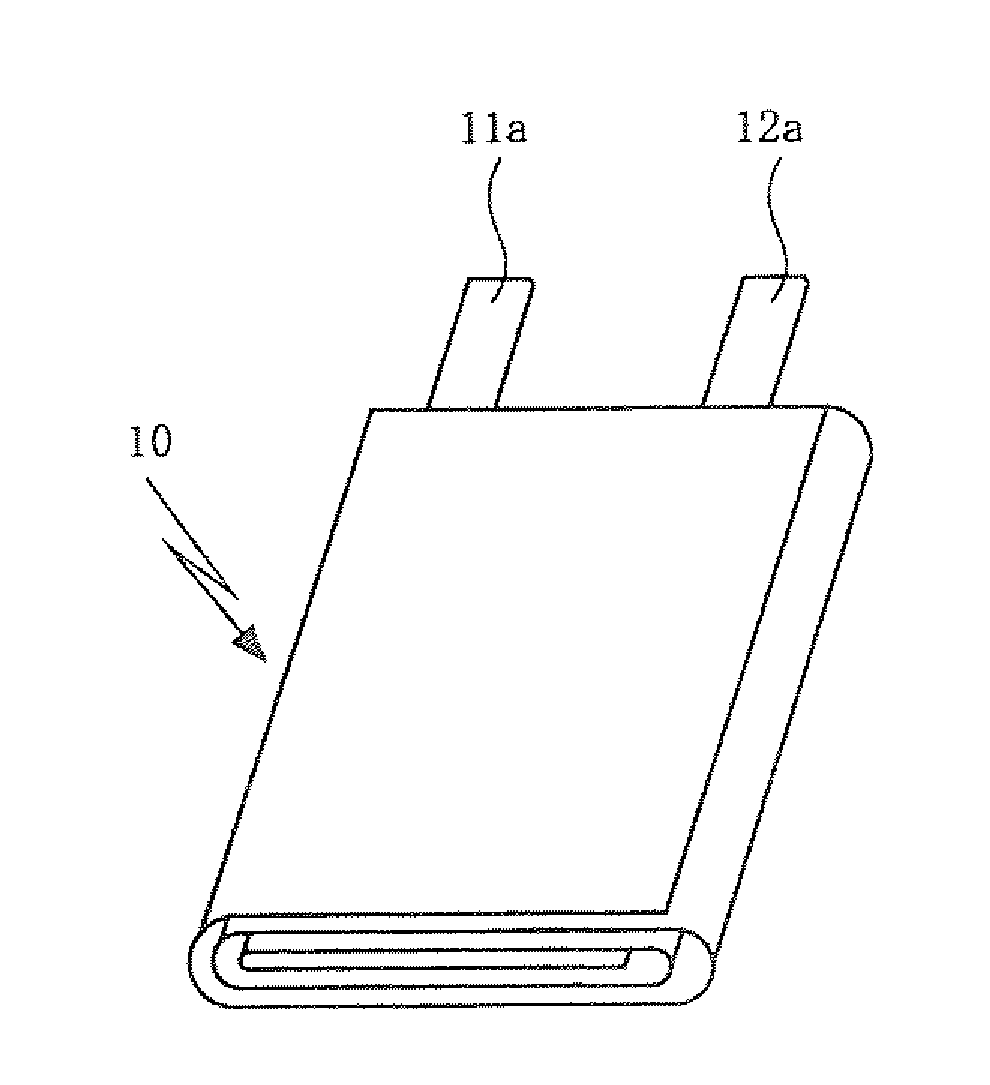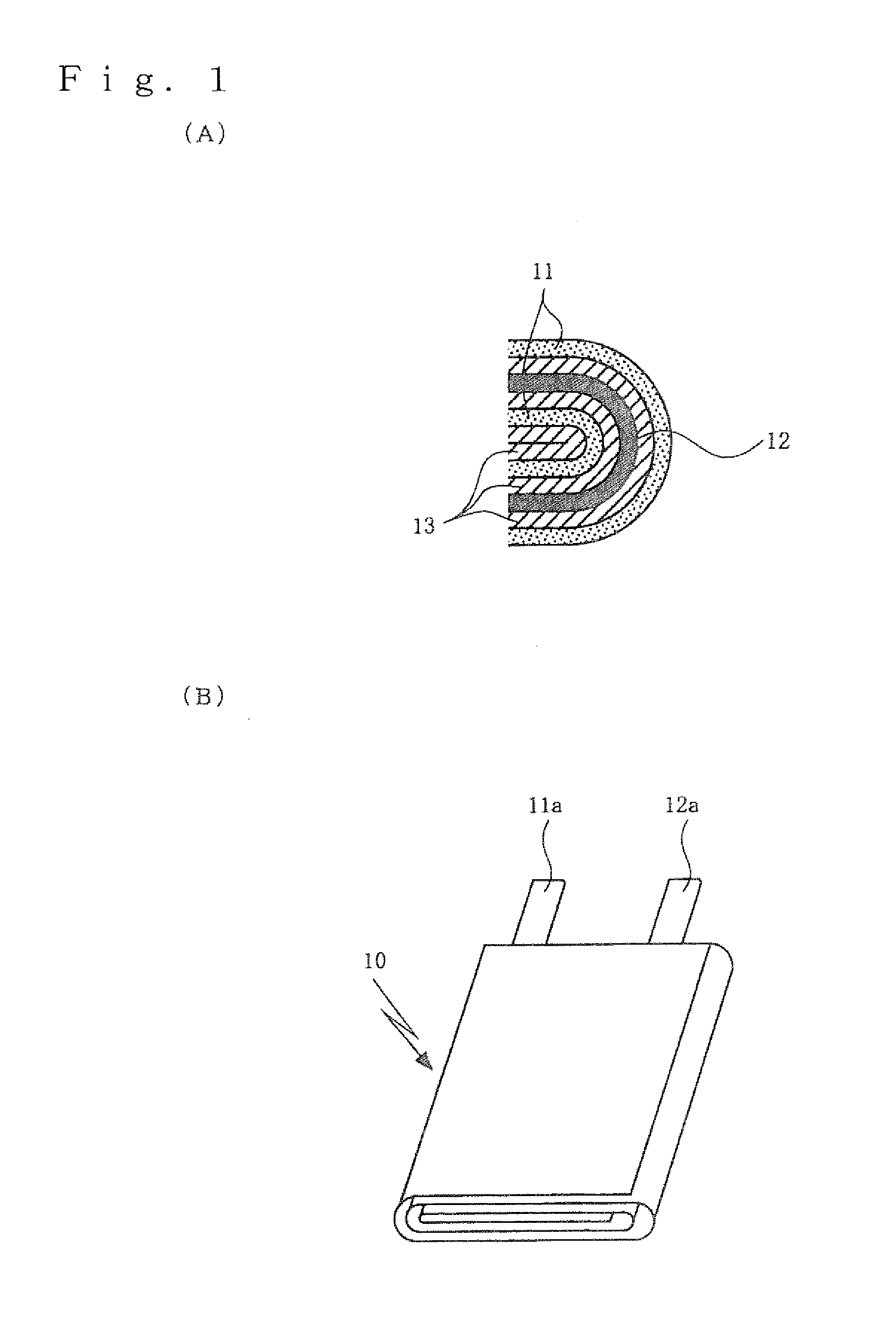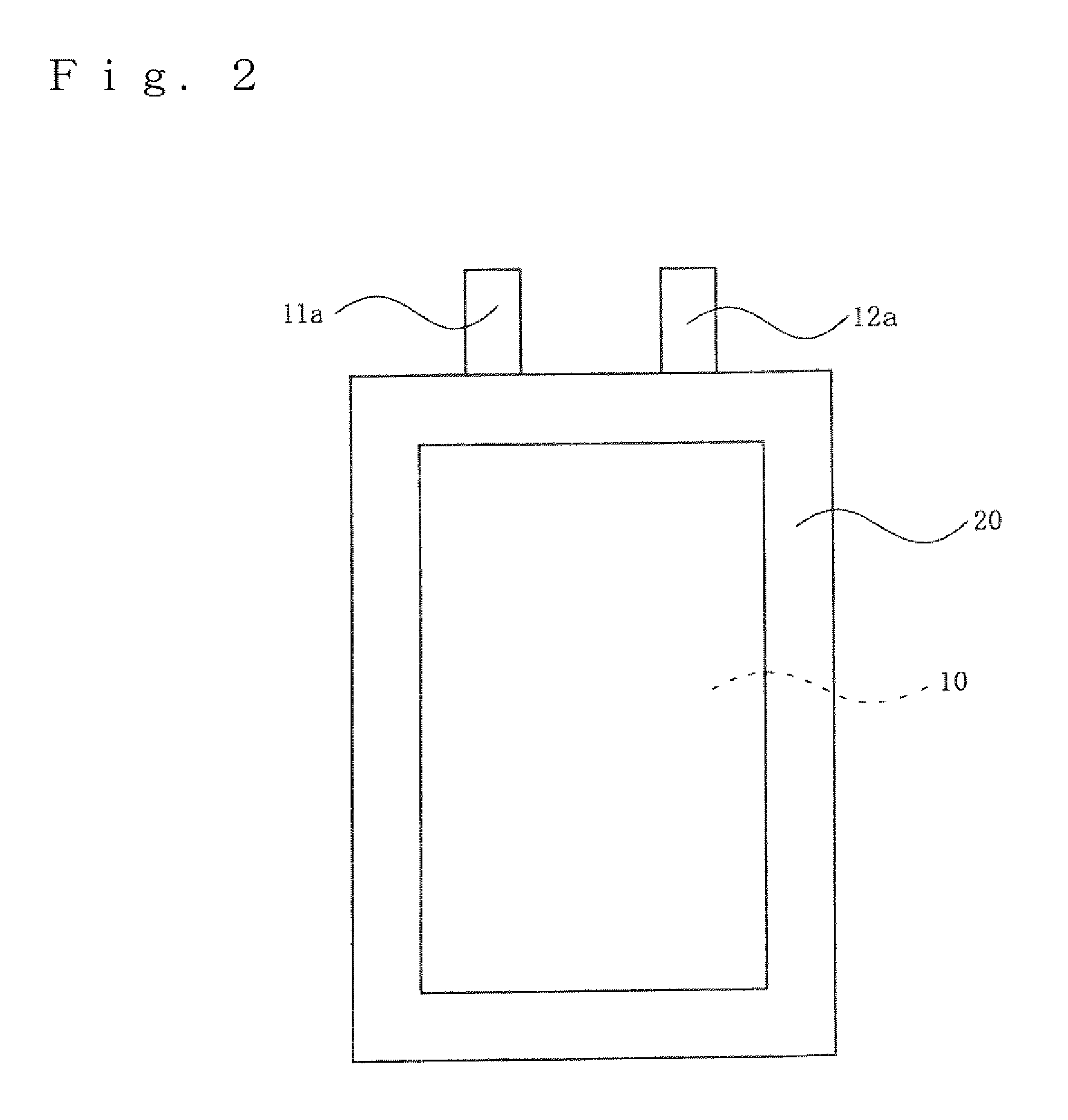Positive electrode active material for non-aqueous electrolyte secondary battery, fabrication method thereof, positive electrode for non-aqueous electrolyte secondary battery, and non-aqueous electrolyte secondary battery
a technology of non-aqueous electrolyte and active material, which is applied in the direction of non-aqueous electrolyte accumulator electrodes, cell components, coatings, etc., can solve the problems of expansion of the battery, increased electric power consumption, and increased temperature, etc., to increase the capacity, increase the capacity, and increase the capacity
- Summary
- Abstract
- Description
- Claims
- Application Information
AI Technical Summary
Benefits of technology
Problems solved by technology
Method used
Image
Examples
example a1
Fabrication of Positive Electrode
[0085]A positive electrode was prepared in the following manner. Lithium cobaltate wherein each of Mg and Al formed solid solution in a concentration of 0.5 mol % was used as positive electrode active material particle. Then, 1000 g of the positive electrode active material particle was poured into 3 liter of pure water and stirred, and an aqueous solution of erbium nitrate dissolving 5.79 g of erbium nitrate 5-hydrate in 200 ml of pure water was added thereto. After that, 10 mass % of an aqueous solution of sodium hydroxide was appropriately added so that the pH of the resultant solution was 9, and erbium hydroxide was adhered on the surface of the positive electrode active material particle. Then, filtering suction was conducted to collect the treated object by filtration and the treated object was dried at 120° C. Thus was prepared the positive electrode active material particle having erbium hydroxide adhered on the surface.
[0086]Next, the positi...
example a2
[0094]In Example A2, in preparation of the positive electrode of Example A1, the positive electrode active material particle having erbium hydroxide adhered on the surface was heat-treated at 200° C. in air atmosphere for 5 hours. Except for the above, the same procedure as in Example A1 was used to fabricate a non-aqueous electrolyte secondary battery of Example A2.
[0095]Here, in the positive electrode active material of Example A2, most of erbium hydroxide adhered on the surface of the positive electrode active material particle were not changed to erbium oxyhydroxide and remained as erbium hydroxide.
example a3
[0096]In Example A3, in preparation of the positive electrode of Example A1, the positive electrode active material particle having erbium hydroxide adhered on the surface was heat-treated at 400° C. in air atmosphere for 5 hours. Except for the above, the same procedure as in Example A1 was used to fabricate a non-aqueous electrolyte secondary battery of Example A3.
[0097]Here, in the positive electrode active material of Example A3, most of erbium hydroxide adhered on the surface of the positive electrode active material particle were changed to erbium oxyhydroxide.
PUM
| Property | Measurement | Unit |
|---|---|---|
| temperature | aaaaa | aaaaa |
| temperature | aaaaa | aaaaa |
| temperature | aaaaa | aaaaa |
Abstract
Description
Claims
Application Information
 Login to View More
Login to View More - R&D
- Intellectual Property
- Life Sciences
- Materials
- Tech Scout
- Unparalleled Data Quality
- Higher Quality Content
- 60% Fewer Hallucinations
Browse by: Latest US Patents, China's latest patents, Technical Efficacy Thesaurus, Application Domain, Technology Topic, Popular Technical Reports.
© 2025 PatSnap. All rights reserved.Legal|Privacy policy|Modern Slavery Act Transparency Statement|Sitemap|About US| Contact US: help@patsnap.com



